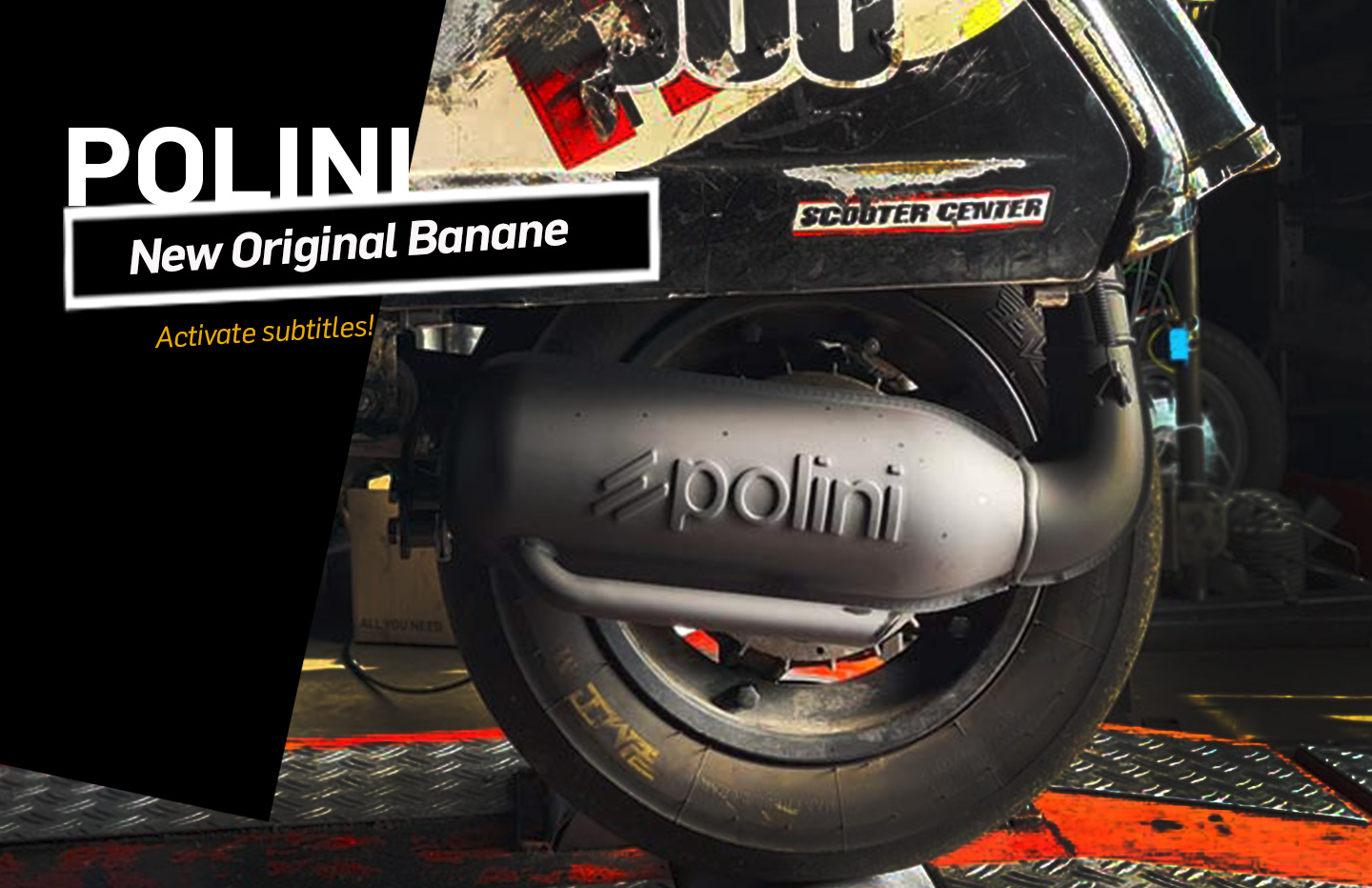Polini has developed the proven
Polini Banana and given it a new look. I have taken a look at what the new banana or, according to the new Polini nomenclature, the "original" exhaust can do. Visually, the new original banana differs significantly from the design of the older models. The body is thicker in terms of material and has a different shape. The plug-in connection on the manifold looks much more secure and the position for attaching the exhaust spring has been moved to a more accessible area.

Polini offers the exhaust systems for the PK and V50/PV engine cases. Until now, the bananas for the PK models were always provided with a clear flattening in the area of the manifold. The new original from Polini simply shows a different shape of the manifold, without flattening. Another significant improvement is the bracket that connects the silencer and the engine housing. Once the base plate of the bracket has been fitted to the engine housing, the silencer can be fitted and removed quite easily using two M8 screws. On the predecessor model of the Banana, this principle was already used in racing, e.g. in Class 5 of the ESC, in order to enable faster tire changes, but here, individual initiative was required when creating the bracket. In general, Polini seems to have taken a few experiences from the racing circus with the new banana. The new Polini banana is also directly suitable for the 3.50-10 tire size, which is used almost exclusively in racing series. The usual 3.00-10 tires on the small frames will of course still fit. I put the new original banana on my K5 for you and did a few tests. The installation went well. No bending, squeezing or more serious interventions are necessary to position the exhaust correctly on the scooter. The elongated holes in the bracket offer considerable scope for adjusting the system to prevent contact with the tire and brake drum. Polini specifically states that the length of the shock absorber should be determined before fitting the exhaust system.

The tested minimum dimension of the shock absorber, i.e. when the shock absorber is compressed to the limit stop, is intended to prevent contact between the exhaust system and the frame. Owners of the rear bgm Pro shock absorbers can rest assured here. The dampers have the required minimum dimension and, in the case of the Sport series, the height of the damper can even be adjusted further.

But now to the results on the test bench.
I would like to say in advance that every engine behaves differently and the differences can be more or less noticeable depending on the treatment. It has been shown that the difference is more noticeable with less heavily or unprocessed engines than with more sophisticated concepts. Here, the new Polini Banana is fitted to an engine that complies with ESC class 5 regulations. The carburetor in this case is a PHBL 24, intake manifold Polini diaphragm, cylinder Polini 133 Racing cast iron. Mazzucchelli Racing crankshaft. The engine housing is machined for the reed valve inlet and the transfer ducts in the engine housing are adapted to the cylinder. The cylinder and the intake manifold remain unmachined. Depending on the mood of the day, my 508 is often in the region of 15 hp in race trim. So the first run is to see if the engine is still in the best of health.

As expected, the 508 delivers 14.9 hp at 7300 rpm after warming up. So everything is healthy and the new Polini original exhaust is fitted for the comparison. Even on the test bench, the significantly higher starting torque is noticeable when warming up. Polini has done a good job here. What feels different on the dyno roller can also be seen in the graph.

At a slightly lower engine speed of 6660 rpm, the new 2022 banana with 15.5 hp gains 0.6 hp compared to the older model. The 0.9Nm increase in maximum torque is already reached at 5200rpm. A direct comparison of the two curves reveals the character of the new 22cc banana. Earlier - more.

Up to approx. 7200rpm, the 22cc banana has the edge in comparison. Exactly the range in which an engine with this power is most frequently driven on the road. From approx. 7300 rpm, the older banana looks a little better and shows a little more desire for higher revs. The carburetor configuration was not changed between the two runs. My guess here would be that with a slightly smaller main jet and needle/mixing tube combination, the 22cc banana can still make some gains at higher revs. But I'll leave that to you to find out for the time being.
My conclusion:
Polini has done a good job and developed a very nice exhaust for everyday riding with some good improvements. The more accessible position of the spring, more solid plug-in connection and the easily adjustable bracket are positive features. I see the usability on larger tires as a further plus. In terms of noise, the new banana is a little duller than the previous model. You can get more impressions of the new Polini banana in the video
Get your Polini ---> 






